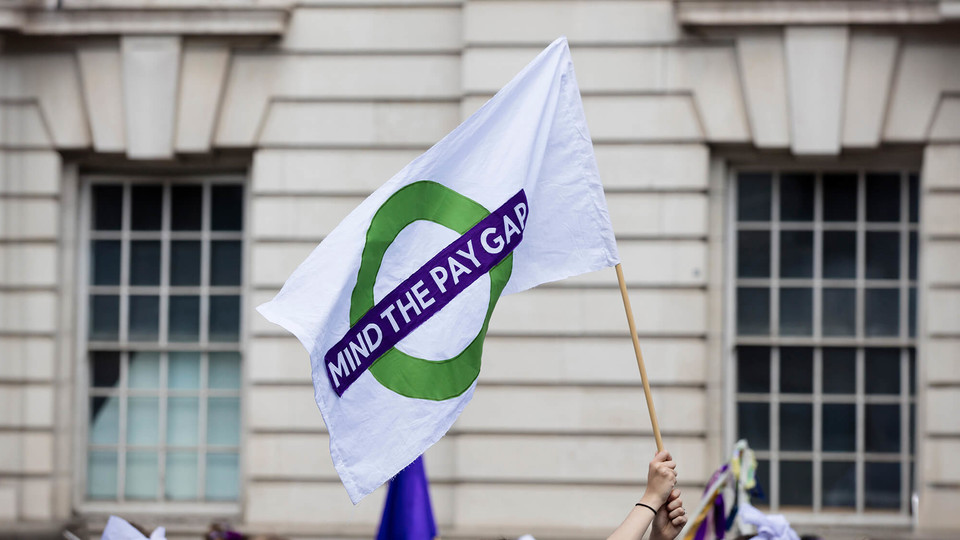Long-Term Partners
Long-term relationships between investors and underwriters influence pricing and trading.


Based on research by Gustavo Grullon, James P. Weston and Shane Underwood
Long-Term Relationships Between Investors And Underwriters Influence Pricing And Trading Behaviors
- Institutional underwriting networks create followings of loyal investors that affect asset prices and trading behavior.
- Investors who partner with the same underwriters for repeated investment rounds form long-term, influential relationships.
- The personal network of an institution underwriting a stock can have a greater impact on its price — and who trades it — than the actual leadership of the institution.
Personal relationships matter, even in the data-driven world of investment banking. Despite the cascade of information about companies, stocks and leaders from news sources such as Google Finance, recent research shows that access to high quality, filtered information from individuals still shapes investor decisions.
Imagine preparing for the initial public offering (IPO) of your startup, one as exciting as Twitter. Your firm goes with the underwriter that has had the best record with promising tech companies. An investment bank network led by Goldman Sachs has a strong reputation for knowing how to put out the right information to generate demand for your new stocks.
Or put yourself in the shoes of a high-powered money manager. You’re going to have $24 million to invest next quarter, and you’re trying to place one or two aggressive positions in your portfolio. You pick up the phone and check with your friend from college who consistently has an ear to the pavement. His word checks out with an insightful colleague and tracks with what The Wall Street Journal has been saying over the past few weeks. When the stock goes public, you want to buy.
Gustavo Grullon and James P. Weston, professors at Rice Business, tested how institutional underwriting networks create followings of loyal corporate clients and investors that affect asset prices and trading behavior. They created two samples of all equity offerings between 1980 and 2008 from the Securities Data Corporation Platinum database. They analyzed stock price movement around IPOs and secondary equity offering (SEO) events, noting the underwriter or change in underwriter.
The researchers found that investors who partner with the same underwriters for repeated investment rounds form long-term, influential relationships. The information these underwriters offer is a key factor in equity trading, on par with geography and index inclusion and price.
For example, if Credit Suisse covers a firm’s SEO, but JP Morgan Chase does not, then their affiliated investors networks have different information at different times on which to base their buying decisions. This difference has the potential to segment the market and influence a firm’s stock price.
In fact, investors' affiliations with banking networks shape trading behaviors so much that Grullon and Weston found a correlation between firm stock prices during an IPO and SEO when the same underwriter was used for both. A coincidence?
Probably not. Grullon and Weston also found that when firms switched underwriters between IPO and SEO offerings, their pricing behaviors look more like those linked with the new bank versus the old. The change in stock movement patterns was actually greater for stocks completing a first SEO than for those whose parent firms were undergoing large changes in ownership.
This means the personal network of the institution underwriting the stock had a greater impact on its price — and who traded it — than the actual leadership of the institution.
Personal bonds, Grullon and Weston confirmed, matter in investing. Biologically, it makes sense: Before we relied on computers and the internet to learn, we based decisions on our fellow primates' actions, narratives and visual cues. When the decisions are big, it seems our brains are still programmed this way, choosing to chew data over a business lunch in addition to compiling, analyzing and synthesizing it in two dimensions.
Gustavo Grullon is a Jesse H. Jones Professor of Finance
James P. Weston is a Harmon Whittington Professor of Finance Jones Graduate School of Business at Rice University
To learn more, please see: Grullon, G., Weston, J. P., & Underwood, S. (2014). Comovement and investment banking networks. Journal of Financial Economics, 113(1), 73-89.
Never Miss A Story
Keep Exploring
Money And Medicine
Could the MD/MBA be a first step in healing a broken health care system?


By Alison Bieser
Could The MD/MBA Be A First Step In Healing A Broken Health Care System?
This article originally appeared in the Jones Journal, Spring 2016.
Meredith Williams was 10 years old when she started saying she wanted to be a doctor. She majored in history at Yale University and by graduation had completed her pre-med course work, written her senior thesis on the Cold War and worked a summer internship at Humana’s headquarters, where the ‘business of medicine’ first drew her in. With the U.S. health care industry growing more complex and polarizing each year, there is a rising need for trained individuals who are versed in the latest, most advanced medical practices and the fast-moving business behind the medicine.
Williams glimpsed it in 2005 during that summer internship between her junior and senior years of college, working for the vice president of corporate communications.
“I was analyzing Humana’s web presence compared with peers and learning the fundamentals of insurance,” she said. “I also started learning about Medicare and how Medicare Advantage worked. Most importantly, I met physicians with an MBA. That’s really where I was inspired to pursue the business training. I was able to see how their work within the company was striving to help make products and services better for members and have an impact at a system level.”
She realized then that she wanted to explore how the health system functioned and how different participants interacted — from physician and health plan to government and individual. Williams researched MD/MBA programs all over the country when she first began applying to medical schools. Her interview at Baylor College of Medicine was different. “It felt like home,” she said.
A Generational Pivot
When she started the MD/MBA program in 2006, Williams represented the beginning of a shift among medical students toward seeking a working knowledge of both medicine and business. “There has been a generational pivot,” she said. “It used to be that MDs got an MBA later, when they were established in their careers and needed the business side. Now it’s considered foundational learning.”
This awareness may be fueling the growth of dual-degree programs in the U.S., which now number 65 nationwide. Approximately 500 students participated in dual MD/MBA programs across the country last year. The business school at Rice was among the first group of institutions in the U.S. to pioneer the MD/MBA, joining forces in 1999 with neighboring Baylor College of Medicine to create the five-year dual-degree program. Today, it graduates three to four students a year.
“The MD/MBA was a completely integrated experience,” Williams said. “During my five years, I started learning about ways the care delivery system influenced health outcomes. We looked at health care quality and value and ways to optimize the parts of health care that are good, based on the outcomes you want to achieve.”
Career potential is cited as one of the primary benefits of the degree combination. Many who complete the MD/MBA go into non-traditional roles, such as life sciences, insurance, hospital management and practice management. Others go on to join consultancies, startups and hospitalist staffing agencies. And there may be more benefits than just an expanding job market when students approach health care in a business context.
“The dual-degree program was an opportunity to be part of the larger conversation to improve health care,” Williams said. “Change was clearly coming. Early on I thought there would be a need for people who could bridge both worlds and help physicians understand how a health plan, like Humana,
can work with them to keep members well with data and insights, and help non-clinical leaders understand the challenges of providing care and where support would be welcome and valuable. That’s why I got the MD/MBA — I wanted to be that bridge.”
Bridging Both Worlds
While at Baylor, she was drawn to emergency medicine and became involved in health policy through organized medicine serving as a trustee for both the Texas Medical Association and later the American Medical Association. Williams chose to complete her residency in emergency medicine at the University of Chicago. She also continued conversations with Humana for a number of years, and eventually the mutual interest led to a leadership position at Humana after finishing her residency.
Williams is now part of a small group driving change and innovation in a fast-moving field. As medical director at Humana’s headquarters in Louisville, Kentucky, she is spearheading a rigorous training program within the company for early-career physicians with an MBA.* Under the direction of the chief medical officer, participants — this next generation of physician leaders — rotate onto teams from other business units to provide a clinical perspective on initiatives designed to improve care coordination and delivery.
The health care industry is grappling with the evolution of its reimbursement model, the rapid pace of technology, the recent focus on quality and the patient experience, and the increasingly collaborative interactions between health care providers and insurance providers that manage population health. The importance of understanding business principles is crystal clear.
"U.S. health care is wildly complex,” Williams said. “To navigate it, you need both clinical and administrative knowledge. Having a career that combines the two disciplines is, for me, the best of both worlds …"
As we transition the health system to a value-based arrangement and begin to focus not on what was done but what the outcome was, it creates new space for health plans and physicians to work together to keep people well. That makes as good business sense as it does clinical sense. Physician business leaders will be essential members of any team trying to help change our health system for the better and do so in a financially sustainable way.”
*Williams’ role as medical director also allows her the flexibility to practice as an emergency physician mostly Friday nights — and serve her community as part of a specialty group affiliated with the Norton Hospital System, where she sees and evaluates patients for emergency care.
Never Miss A Story
You May Also Like
Keep Exploring
Love At First Sight Isn't Enough
In business partnerships as in marriage: Get acquainted, be nice and build trust.


Based on research Prashant Kale, Melanie Schreiner and Daniel Corstein
In Business Partnerships As In Marriage: Get Acquainted, Be Nice And Build Trust
- Companies forging a partnership must prioritize trust.
- One-on-one informal chats in the hall or impromptu coffee breaks can provide crucial information or ideas.
- Separate companies, by definition, don’t share the same cultures, skills or goals. If the firms are too much the same, adding a partner doesn’t add much spark. If they are too different, harmony can be elusive.
It’s one thing to know your firm might benefit from a partner. It’s quite another to make that relationship work. Corporate alliances, experienced managers know, look a lot like marriages: maintaining that partnership requires hard work and specific skills. And even when everyone stands to profit mightily from the union, there are no guarantees a relationship will have what it takes to survive.
Because business alliances can be so vital, much research has gone into puzzling out exactly how the successful ones work. Among the most important steps, studies suggest, are selecting the right partner from the start and clearly defining the terms of engagement.
Emerging evidence now shows that a healthy alliance also requires a firm to focus on the relationship once the union is sealed. According to a recent study co-authored by Prashant Kale, an associate management professor at Rice Business, strong alliances demand coordination, communication and bonding.
In other words, when it comes to businesses, love at first sight isn’t enough.
In their study, Kale and his co-authors analyzed the links between major software vendors IBM, Microsoft and SAP and an array of software service providers. Among the issues surveyed: did managers think they could “intuitively feel” what their business partners needed to discuss with CEOs?
The findings showed that, much as in individual relationships, forging social bonds, managing information and sharing knowledge are critical for a full partnership to flourish.
These conclusions are particularly important since many firms see alliances can offer a competitive edge — but pay less attention to keeping those alliances strong for the long haul. That attention is key: Organizations that do a better job of this have better outcomes.
Kale and his colleagues also looked at how considerate, supportive and attentive one firm was toward another, as well as how well they respected each other’s viewpoints; how disagreements were resolved; and if they stood together in tough times. Far from touchy-feely details, mastering these skills equaled improved business outcomes. Here are some of their findings:
- Companies forging a partnership must prioritize trust. Executives, managers and the rank and file all benefit from open, honest sharing of information.
- Regularly scheduled meetings work best in some situations, while occasional “dog and pony shows” are better in others. As in the world of startups, it isn’t board rooms or showrooms but one-on-one informal chats in the hall or coffee breaks that can generate pivotal information or ideas.
- Separate companies, by definition, don’t always share the same cultures, skills or goals, and they can vary dramatically in size, earnings and resources. If the firms are too much the same, adding a partner doesn’t add much spark. If they are too different, harmony can be elusive.
Successful partnerships with other companies, the researchers concluded, requires being nice, open and getting acquainted. The best modern business alliances, in other words, share traits with aristocratic marriages. Social bonds may not be the first priority for the union, but in the end they can transcend economic interests, and ultimately make the business more powerful.
Prashant Kale is an associate professor of Strategic Management at Jones Graduate School of Business at Rice University.
To learn more, please see: Schreiner, M., Kale, P., & Corstein, D. (2009). What really is alliance management capability and how does it impact alliance outcomes and success? Strategic Management Journal, 30(13), 1395-1419.
Never Miss A Story
You May Also Like
Keep Exploring
Heavy Losses
Obese men face significant discrimination in retail settings, both as clients and employees.


Based on research Michelle "Mikki" Hebl, Enrica N. Ruggs and Amber WIlliams
Weight-Based Stereotypes In Retail Settings Harm Product Perceptions And Organization Outcomes
- Over the past few decades, U.S. obesity rates have spiked. So has discrimination toward heavy people.
- Research about this prejudice abounds, but it centers on overweight women and overlooks overweight men.
- New research shows that obese males face significant discrimination in retail settings, both as clients and employees.
It's an American paradox: While more and more of us are obese — one-third of U.S. adults — discrimination against heavy people has spread. Studies show just how toxic this stigma is: Overweight people are judged to be less hardworking, less attractive and less conscientious. They get shabbier treatment in practice as well, and are more likely to be discriminated against in health care, interpersonal relationships and the workplace.
While decades of research have anatomized these issues, it has focused on overweight women. There's good reason for this. While heavy women and men report equal levels of mistreatment from friends, family and co-workers, heavy women report higher levels of mistreatment from strangers and the general public. Women are also badly treated at lower levels of heaviness than overweight men.
But overweight men face serious prejudice too, according to new research by Mikki Hebl, a professor at Rice Business, and two co-authors. To measure that prejudice in the workplace, Hebl and her colleagues launched a novel study at a mall in what they describe as a large southern city. Deploying researchers who presented themselves first as ordinary-sized men and then, with the use of prosthetics, as men who were obese, the researchers tracked how obese men fare in a variety of retail settings.
Heavy men, the researchers found, face striking mistreatment in such environments. For their study, the team asked research assistants, also called confederates, to pose first as obese job seekers and then as obese shoppers. First the men visited stores wearing size medium shirts and pants with a 30-inch average waist. They revisited the same stores wearing special obesity prosthetics, size extra-large shirts, and pants with 40-inch waists.
Using formal training and memorized scripts, the men arrived at 112 stores pretending to apply for a job, and 111 stores where they headed to the center and waited for service. If no employee approached, the faux-shoppers followed a script in which they sought an employee, asked for help buying a present and then asked for a second recommendation.
The results? Whether asking for jobs or customer service, the subjects faced no weight-related difference in what is called formal treatment: overt and illegal actions such as giving unequal access to resources. But when the "heavy" men applied for jobs, they faced far worse interpersonal treatment than the ordinary sized men: That is, subtle behaviors such as hostility that aren't illegal but can still drive off workers and clients.
Heavy men, in other words, "are not immune to interpersonal discrimination in retail settings," the scholars wrote. These subtle aggressions, they pointed out, undercut not only people who are heavy — but the businesses that engage with them. Just as excluding women saps whole nations' economic vitality, driving off people who are heavy limits businesses' access to brainpower and dollars. Both types of loss are too heavy to make business sense.
Mikki Hebl is the Martha and Henry Malcolm Lovett Chair of Psychology at Rice University and a professor of management at Jones Graduate School of Business at Rice University.
To learn more, please see: Ruggs, E. N., Hebl, M. R., & Williams, A. (2015). Weight isn’t selling: The insidious effects of weight stigmatization in retail settings. Journal of Applied Psychology, 100(5), 1483-1496.
Never Miss A Story
Keep Exploring
Timing Is Everything
Early peeks at SEC notices increased information uncertainty.


Based on research K. Ramesh, Bei Dong, Edward Xuejun Li and Min Shen
What Happened When Financial Writers Got Early Access To Corporate Press Releases?
- New research uncovers an unfair trading advantage that skewed the playing field before Regulation Fair Disclosure (Reg FD) became effective in 2000. Before Reg FD, the SEC gave financial journalists early access to corporate press releases. Over time, this led to the creation of high-cost subscription services.
- The practice ended after the SEC released Regulation Fair Disclosure.
- This advance notice had as much impact on investing as personal contact from executives, a practice long criticized for its favoritism.
It may be hard to believe, but as recently as 2000, an SEC-sanctioned rule gave financial news media a 15-minute head start on viewing firm press releases.
Today, just a fraction of a second of such early access can mean staggering profits. To grab that advantage, investment houses pour millions of dollars into ultra-fast fiber optic and microwave communication.
Before Regulation Fair Disclosure (Reg FD), financial media actually sold advance access to this information – by subscription. According to research co-authored by K. Ramesh, Herbert S. Autrey Professor of Accounting at Rice Business, buyers used the information to move markets before the general public ever saw the releases. The policy strikingly disadvantaged regular investors.
Not that the SEC meant for the early bird information to be used this way. In fact, it was supposed to do the opposite: to level the playing field for regular investors. Sophisticated investors, after all, enjoy better resources and expertise for extracting valuable information from firm news. The SEC decided to give regular investors a 15-minute edge by granting financial reporters early access to firm press releases.
The idea was that the press would use that 15-minute window to distill tradable information and release it prior to the full press release going out to the public. Instead, the plan backfired. Media outlets charged subscriptions for the special access, effectively making investing a pay-to-play game. The good news is that this practice ended in August 2000, after Reg FD reinforced the importance of fair access to public information.
Interestingly, the SEC had meant for its early-access plan to democratize investing. It was Business Wire and PR Newswire, firms hired by companies to publicize their business news, that first shed light on the practice.
To study what happened before this policy change, Ramesh and his co-authors used intra-day data to analyze the flow of information into the stock market. The team compared the 15-minute market activity before earnings press releases went public before Reg FD and after its implementation.
They found that traders with advance access were moving markets before the public got the same information. The effects were especially lopsided for firms with institutional investors that base their stock positions on short-term earnings. Subscribers also had a striking edge after good-news press releases, which are easier for traders to use in investing.
The early peeks also increased information uncertainty, which they measured by bid-ask spreads. The bottom line: Giving traders early access to firm information gave sophisticated investors an edge. After the SEC changed its policy, the study raises a new question. Do traders now get an unfair advantage when they can snatch just a few seconds’ advance look at information? If so, it may take both policy and technology to reconcile these current practices with the spirit of Reg FD.
K. Ramesh is the Herbert S. Autrey Professor of Accounting at Jones Graduate School of Business at Rice University.
To learn more, please see: Dong, B., Li, E. X., Ramesh, K., & Shen, M. (2015). Priority dissemination of public disclosures. The Accounting Review, 90(6), 2235-2266.
Never Miss A Story
You May Also Like
Keep Exploring
Don't Mind If I Do
Why Managers Need Mindful Workers


Based on research Erik Dane and Bradley J. Brummel
Why Managers Need Mindful Workers
- People are mindful when they attune to their environment and thoughts while staying in the present moment.
- Research shows employees who are more mindful may perform their jobs better and want to stay with their employers longer.
- From a management perspective, this highlights the importance of helping employees develop greater mindfulness.
Research has demonstrated that mindfulness positively relates to academic performance, judgment accuracy and problem solving. Mindfulness also has been associated with a host of psychological and physical benefits, including increased life satisfaction and relationship quality, decreased depression and stress and more effective self-regulation of thoughts and emotions.
So mindfulness is always good, right? Well, while mindfulness has certainly been explored in a wide range of contexts, the effects of mindfulness in the workplace largely remain a matter of intuition and generalization. After all, a classroom is not an office, and students are not employees. We shouldn’t generalize between contexts in the absence of empirical evidence.
Erik Dane, a former management professor at Rice Business, and his co-author Bradley J. Brummel of the University of Tulsa sought to fill this research gap by studying mindfulness in a dynamic workplace setting. Doing so allowed them to explore the effects of mindfulness on two important work outcomes: job performance and turnover intention. They specifically chose a dynamic workplace, the restaurant industry, because it requires workers to make a series of interdependent decisions in real-time – or in the present moment – and would thus be ripe to reveal the impacts of mindfulness.
And indeed, the survey-based study of 98 restaurant servers revealed a positive association between mindfulness and job performance. The more mindful the employees were, the more highly their managers rated their job performance.
Surprising? Perhaps not, but the researchers didn’t stop with this confirmation of the beneficial effect. They delved further into the association between mindfulness and job performance by disentangling it from a close conceptual cousin of mindfulness: engagement. This distinction has important implications for managers.
Dane and Brummel suggest that mindfulness differs from engagement in a subtle but important way. Whereas mindfulness is a cognitive construct, engagement is an affective construct. In other words, mindfulness involves a person’s mental processing of the multitude of events in the work environment, whereas engagement involves a person’s feelings about the work environment that ultimately drive his or her motivation to perform. For example, a mindful restaurant server may perform well because she constantly scans the expressions of her guests, how full their iced tea glasses are and the status of their orders in the kitchen. In contrast, an engaged server may perform well because she is absorbed by and dedicated to her job, which drives her to succeed.
But is it possible for a high-performing employee to be highly engaged in the workplace, yet not be highly mindful? Yes. Dane and Brummel found that mindfulness had a positive effect on job performance independent of engagement, which means managers should strive to nurture employees who are both engaged and mindful. Engaged employees may be high performers because they are enthusiastic and passionate, but they may become even higher performers when their attention is focused mindfully.
The study revealed a more complicated relationship between mindfulness and turnover intention. Considered without regard to how engaged employees were, the study found that highly mindful employees are less likely to want to leave their jobs than less mindful employees. Mindfulness may enhance self-regulation, which in turn helps people cope with stress in a dynamic workplace. When examined together with engagement, however, mindfulness did not predict employees’ intention to leave their positions.
Here again, the ultimate takeaway for managers is that both mindfulness and engagement matter in the workplace, whether they facilitate beneficial work outcomes separately or in combination.
While some people may simply be more mindful than others, evidence exists that mindfulness can be enhanced through practice, training and experience. Meditation-based programs such as mindfulness-based stress reduction, for example, may help employees focus attention on the present. With the empirical evidence of positive work outcomes associated with mindfulness now in hand, managers should continue to be mindful of this emerging scholarship as other important organizational outcomes and workplace contexts are examined.
Erik Dane is a former professor and was the Jones School Distinguished Associate Professor of Management in organizational behavior at Rice Business.
To learn more, please see: Dane, E., & Brummel, B. J. (2014). Examining workplace mindfulness and its relations to job performance and turnover intention. Human Relations, 67(1), 105-128.
Never Miss A Story
You May Also Like
Keep Exploring
When Clients Just Don't Understand
How clueless clients can hurt your business — and how to enlighten them.


Based on research Erik Dane, Heather C. Vough, M.Teresa Cardador, Jeffrey S. Bednar and Michael G. Pratt
How Clueless Clients Can Hurt Your Business — And How To Enlighten Them
- When clients lack a complete understanding of your professional role and the complexity of your work, it can lead to unmet expectations and diminished trust.
- Solutions include providing information, demonstrating your work and building personal relationships with clients.
- Start talking with your clients ASAP about your work and connect with them on a personal level to garner goodwill.
Clueless clients are aggravating. Worse, they can cost professionals money and hinder productivity, according to research co-authored by Erik Dane, a former management professor at Rice Business. Dane’s team devised a model that more precisely explains what some clients are clueless about — and the costs of their ignorance.
Perhaps more importantly, the model describes tactics you can use to mitigate the consequences of dealing with clients who don't get what you do.
Analyzing interviews with 85 professionals from four different fields let Dane and his co-authors go beyond theory to gain in-depth knowledge from real work experiences. In other words, rather than imposing a preconceived model upon the professionals’ experience with clients, they allowed the model to emerge directly from the mouths of the professionals themselves. As a result, their research provides managers with a valuable understanding of problematic professional-client interactions that is grounded in reality.
The researchers’ first step was to understand exactly what the professionals thought people didn’t fully grasp about their work. Two clear themes emerged in the study, which the researchers call role-based image discrepancies. These discrepancies arise when professionals think that outsiders’ idea of what they do differs considerably from the reality of what they do. Firstly, professionals think outsiders lack a complete understanding of the scope of the work they do. Secondly, they think outsiders may not completely understand the level of complexity or difficulty of their work.
These discrepancies become problematic when someone who doesn’t understand becomes a client. Clients may devalue the profession because they underestimate the importance of the work, or they may have impractical or skeptical expectations about timelines, services and the intentions of the professional.
The researchers discovered that these misalignments result in unmet expectations and diminished trust, which can impede productivity on three fronts. First, collaboration may be impaired if clients don’t give necessary information to professionals or if they unintentionally slow the progress of projects. Second, clients may question the amount they are being charged, which may make professionals feel pressure to complete their work without adequate time or not bill for hours they worked if they suspect the client will object. Finally, productivity (and income) may suffer when clients bypass professionals for some tasks because they don’t understand the true value of their work.
But Dane and his colleagues discovered several tactics that can help — and they stressed the importance of employing these tactics before the detrimental effects of clueless clients rear their ugly heads. If a professional does nothing to prevent these effects, Dane warns, she may find herself in a vicious, self-reinforcing spiral of unmet expectations, damaged trust and impaired collaboration.
One tactic is to inform clients about the work process right from the start. Once things go awry, it can be difficult to regain trust or repair the relationship. Professionals should give their clients a big-picture overview of their work and its value, as well as its scope and complexity. They should not, however, try to convey the nitty-gritty technical details of their work, which could confuse and alienate clients.
When possible, professionals should also demonstrate their work for clients. Doing so may reassure clients not only that complex work is getting done, but also that the professional is a capable expert. Of course, this tactic is easier to accomplish in some professions than others, notably those in which tangible objects can be manipulated in front of the clients’ eyes.
And last but not least, Dane and his team advise professionals to build friendly relationships. By developing personal connections and rapport with their clients, professionals can garner goodwill that may overcome misconceptions about their roles and work. Moreover, the conscious effort to nurture these personal relationships promises to streamline the working relationship and sidestep the productivity costs associated with problematic client interactions.
The takeaway? Get out from behind the curtain and start talking with your clients as soon as possible. Give them an overview of what you do, how you do it and why it is valuable. When you can, let them watch you do some of your work so that they can see for themselves how complex and specialized it is. And perhaps most importantly, connect with them as people, not just as clients.
Erik Dane is a former professor and was the Jones School Distinguished Associate Professor of Management in organizational behavior at the Jones Graduate School of Business at Rice University.
To learn more, please see: Vough, H. C., Cardador, M. T., Bednar, J. S., Dane, E., & Pratt, M. G. (2013). What clients don’t get about my profession: A model of perceived role-based image discrepancies. Academy of Management Journal, 56(4), 1050-1080.
Never Miss A Story
You May Also Like
Keep Exploring
Word Of Mouth
Both firm-sponsored and consumer-driven online communities offer value to businesses.


Based on research Constance Elise Porter, Sarv Devaraj and Daewon Sun
Firm-Sponsored And Consumer-Driven Online Communities Both Offer Value To Businesses
- As virtual communities have boomed in recent years, businesses are pondering the best way to work with them.
- Two important models have emerged: virtual communities sponsored by firms, and those where consumers are the driving force behind community creation.
- Which works better for firms? And should a company invest resources in sponsoring a community? Analysis across a range of communities reveals that both models have value — but there is good reason for companies taking an active role, especially when it comes to building trust.
Businesses have always known that word of mouth matters. If customers, or people in general, say nice things about you, other people listen, and may be inspired to buy your products.
In the past, though, word of mouth was fairly limited because it depended on person-to-person contact. Now, with the rise of the Internet and social media, what was once chatter around the neighborhood has become national and even international. Virtual communities can bridge not just distance, but social class and other barriers, creating a near-dizzying power to share information.
For both consumers and companies, this means opportunity. The former can learn from peers about a firm and its products; the latter can build brands, nurture client loyalty and glean marketplace insights. But how to best make use of this virtual new world? Do customer comments rule, or can firms make a difference by investing resources to sponsor their own communities?
Virtual communities come in three basic forms: groups created by a third party (think Epinions.com, which tags itself as “unbiased reviews by real people”); those created by consumers with a shared interest (say coffee, or a type of car); and those created by a firm, which tend to be found on a firm’s website. While the first type of community has sparked a lot of interest among information system researchers, the latter two have garnered far less attention, with no researchers exploring consumer-initiated and firm-sponsored communities comparatively.
To help fill this gap, Constance Elise Porter, an assistant professor of marketing at Rice Business, and two co-authors surveyed a selection of two types of consumers – those who were members of a virtual community that was sponsored by a firm and others who had only visited a virtual community run by consumers. The researchers asked the former about experiences in a firm-sponsored community and the latter about their experiences in a consumer-driven community. Both sets of subjects were queried about how information from community members, also known as Member Generated Information (MGI), shaped their decision-making process. However, those on the firm-sponsored side were also asked how effective those firms were at offering quality content as well as fostering interaction and member embeddedness.
The researchers measured "value" by a subject's willingness to share personal information and spread positive word of mouth.
Not surprisingly, MGI had major sway with both groups, particularly when it was consistent, showed consensus and was distinctive. But there was good news for those managers who wonder if spending time and money on a firm-sponsored virtual community is a waste of resources. Where trust is concerned, those in the second group said, a firm's effort toward customers can have an even greater influence than MGI.
In the end, then, both firm-sponsored and customer-initiated virtual communities matter. Managing customer relationships online makes a real difference; virtual communities of both types can be crucial, their benefits hinging on external marketplace conditions and a firm's internal resources. By exploring two types of virtual communities, Porter and her co-authors found empirical evidence about how trust and value is created and opened new avenues of research into the ways these worlds affect business. That's worth a little word of mouth.
Constance Elise Porter is an assistant clinical professor of marketing at Jones Graduate School of Business at Rice University.
To learn more, please see: Porter, C. E., Devaraj, S., & Sun, D. (2013). A test of two models of value creation in virtual communities. Journal of Management Information Systems, 30(1), 261-292.
Never Miss A Story
Keep Exploring
Ahead Of The Curve
Mergers can be disruptive, but a dual-goal strategy pays off in the long run.


Based on research Vikas Mittal, Vanitha Swaminathan, Christopher Groening and Felipe Thomaz
Cost Leadership vs. Customer Focus: Why Choose?
- Managers should forgo choosing between efficiency and customer satisfaction goals in a merger and instead pursue a dual-goal strategy.
- A dual-goal strategy pays off in the long run.
- When executing a dual-goal strategy, take the firm’s unique resources and industry dynamics into account.
Mergers are making a comeback, but fewer than half actually create financial value. Take the 2008 merger between Delta and Northwest Airlines, for example. Initially, it was declared a success because of management’s disciplined approach to cost control. But later on, the newly merged firm suffered earnings shortfalls and a lackluster stock price. So, if the success of a merger is driven purely by cost efficiency, what went wrong with Delta? Well, anyone who flew Delta just after the merger knows the story. Late arrivals and rising customer complaints caused customer satisfaction to plummet.
In hindsight, it seems obvious that things might have turned out differently had Delta’s executives focused simultaneously on cost efficiency and customer satisfaction. But, truth is, having a dual-goal strategy has always been frowned upon by senior managers. After all, it’s what many of them learned in business school: “Successful firms must choose a dominant strategy: cost leadership or customer focus. Trying to do both well is just too difficult because the two strategies are in conflict about how to grow the bottom line.” But a lot has changed since those business school days, and we now know that managers don’t always have to choose between two strategic goals. A dual-goal strategy is feasible for many firms.
But is there anything about a merger environment that makes a dual-goal strategy especially attractive? Yes, according to a study co-authored by Vikas Mittal, J. Hugh Liedtke Professor of Marketing at Rice Business. In fact, findings from the study show that a dual-goal strategy actually maximizes long-term value for a merged firm.
Prior research already confirms that a dual-goal strategy could boost the bottom line — merger or no merger. Why? Because the income statement math works: customer satisfaction increases sales and efficiency reduces costs. Another way to think about the power of a dual-goal strategy is that the extra revenue generated by higher customer satisfaction could be redeployed to shore up efficiency-enhancing initiatives. So, a dual-goal strategy could be synergistic.
What makes the merger context uniquely suited to the pursuit of a dual-goal strategy? Mittal and his co-authors argue that while mergers can be disruptive and financially challenging early on, a dual-goal strategy pays off in the long run because it provides management the opportunity to make beneficial changes: strengthen organizational systems, bolster capabilities and increase market power. For example, mergers provide managers the flexibility to reallocate human resources most productively, across both firms, in line with the new strategic direction. Also, mergers give managers a chance to access new markets and pursue profitable customers with differentiated offerings, both of which could sustain satisfaction and grow profits. Finally, from a cost-efficiency standpoint, mergers help managers take advantage of economies of scale and scope, streamline (often through downsizing) and invest wisely in new resources such as efficiency-driven information technology systems.
Mittal and his co-authors analyzed secondary data spanning nine years (from 1995 to 2003) and 429 firms (54 percent involved a merger). This sample of mostly large companies was tracked by the American Customer Satisfaction Index (ACSI) and represented a mix of firms in services and goods industries (e.g. Ford, Coca-Cola, FedEx, Southwest Airlines, Kroger). Firms varied in terms of ACSI customer satisfaction ratings as well as efficiency ratings, as measured by an index created for this study. The change in the so-called Tobin’s q metric — the market value of a firm’s stock divided by the replacement costs of the firm’s total assets – was used to measure the change in a firm’s long-term performance. Tobin’s q is a forward looking measure that points to investor expectations of a firm’s future success.
Findings from the study were clear. With mergers, especially those that are horizontal, an increase in customer satisfaction coupled with an increase in efficiency results in the highest change in a firm’s long-term performance. There is evidence that efficiency gains could improve long-term performance, even in the face of a dip in customer satisfaction. But take note: The performance gains under those conditions are smaller (and in Delta’s case nonexistent) in comparison to those achieved when efficiency and satisfaction are increased simultaneously. And, importantly, when no merger has taken place a dual-goal strategy does not enhance long-term performance in comparison to other strategies, such a focusing on either increased customer satisfaction or efficiency.
Taken together, these findings suggest that mergers provide a uniquely beneficial environment in which to pursue a dual-goal strategy. But if you are contemplating a merger, take heed: The findings don’t tell you exactly how to improve customer satisfaction or efficiency in your business or industry. Context matters. So, in the end, take into account your firm’s unique resources and industry dynamics to execute a dual-goal strategy, knowing that maximum long-run performance gains are at stake.
Vikas Mittal is the J. Hugh Liedtke Professor of Management in Marketing at Jones Graduate School of Business at Rice University.
To learn more, please see: Swaminathan, V., Groening, C., Mittal, V., & Thomaz, F. (2014). How achieving the dual goal of customer satisfaction and efficiency in mergers affects a firm’s long-term financial performance. Journal of Service Research, 17(2), 182-194.
Never Miss A Story
You May Also Like
Keep Exploring
After Hours
Most recommendation revisions from stock analysts defy recent information from firm news.


Based on research by K. Ramesh, Edward Xuejun Li, MinShen and Joanna Shuang Wu
Most recommendation revisions from stock analysts defy recent information from firm news.
View the cartoon here: Roller Coaster
- Analysts’ revisions offer authentically new information.
- Analysts’ revisions don’t duplicate corporate news. More than 50 percent of these revisions offer information contrary to recent firm news.
- After-hours revisions are more common and provide even more new information than regular-hours revisions.
Issued on the heels of company news releases, analysts’ stock recommendations are often dismissed as repackaged PR. In-house forecasts, skeptics say, exist only to peddle a brokerage house’s other services. Yet the houses themselves spend real money in court defending their analysts’ copyrights. The reports, the houses insist, add value. It turns out that the houses are right.
A new study co-authored by K. Ramesh, a professor at Rice Business, reveals that analysts do not simply rehash the company line: They not only help investors with stock valuation by issuing confirming revisions, but also reverse prevailing market beliefs by issuing contrary revisions.
In the past, academic research yielded mixed results on the topic. Researchers typically focused on daily stock market reaction to analysts’ recommendations, which often are released around corporate news, and tended to overlook analyst revisions that were released after hours. Both methods blurred the picture. They made it difficult to parse the effects of stock recommendations versus corporate news and drew an incomplete conclusion of information contained in analyst revisions.
To correct these distortions, Ramesh and his co-authors used fine-grained, intra-day data that separate stock market reactions to company news releases from reactions to analyst revisions. They then compared how much new information each source provided. Although the timing of analysts’ revisions often coincided with that of news releases, the movement of stock prices showed that investors did indeed value the analysts’ information.
Intriguingly, the authors also found a striking difference in the content of revisions published during regular trading hours and revisions that came out after hours. Exploiting this previously ignored area, Ramesh and his co-authors showed that the number of revisions released after regular trading hours was much greater than the number during regular trading hours. The spike reflected a greater demand for the information from the institutional investors that dominate after-hours trading. These after-hours revisions, the researchers found, also carried more information than revisions published during regular trading hours.
If analyst revisions were simply repackaged corporate news, you would expect them to be positive when firm news was positive and negative when it went sour. However, Ramesh and his co-authors found, only 28 percent of revisions actually dovetailed with the corporate news they followed. These revisions, moreover, actually offered more information than did the corporate releases. The rest of the time analysts either made recommendations independently or issued revisions contrary to firm news releases.
Contrary to skeptics’ complaints, in other words, the study’s findings strongly suggest that analysts not only don’t rehash the corporate line — they give investors new and useful information. But the skeptics may still be right about something: The new findings don’t indicate that analysts’ revisions are necessarily correct. They simply offer authentically new information. Investing is still risky business, even when the analysts do their part to inform.
K. Ramesh is the Herbert S. Autrey Professor of Accounting at Jones Graduate School of Business at Rice University.
To learn more, please, see: Li, E. X., Ramesh, K., Shen, M., & Wu, J. S. (2015). Do analyst stock recommendations piggyback on recent corporate news? An analysis of regular-hour and after-hours revisions. Journal of Accounting Research, 53(4), 821-861.
Never Miss A Story






















